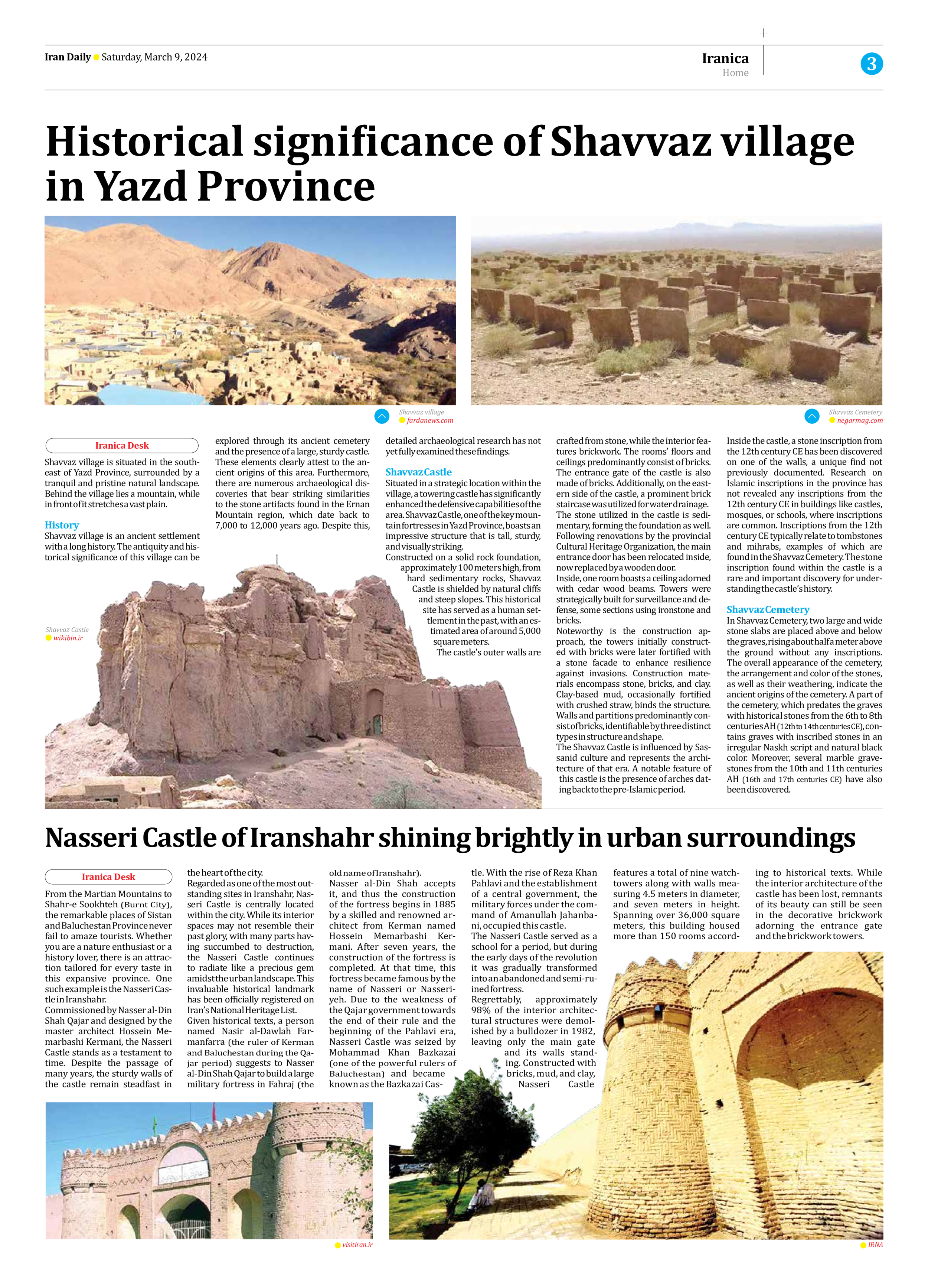
Historical significance of Shavvaz village in Yazd Province
Shavvaz village is situated in the southeast of Yazd Province, surrounded by a tranquil and pristine natural landscape. Behind the village lies a mountain, while in front of it stretches a vast plain.
History
Shavvaz village is an ancient settlement with a long history. The antiquity and historical significance of this village can be explored through its ancient cemetery and the presence of a large, sturdy castle. These elements clearly attest to the ancient origins of this area. Furthermore, there are numerous archaeological discoveries that bear striking similarities to the stone artifacts found in the Ernan Mountain region, which date back to 7,000 to 12,000 years ago. Despite this, detailed archaeological research has not yet fully examined these findings.
Shavvaz Castle
Situated in a strategic location within the village, a towering castle has significantly enhanced the defensive capabilities of the area. Shavvaz Castle, one of the key mountain fortresses in Yazd Province, boasts an impressive structure that is tall, sturdy, and visually striking.
Constructed on a solid rock foundation, approximately 100 meters high, from hard sedimentary rocks, Shavvaz Castle is shielded by natural cliffs and steep slopes. This historical site has served as a human settlement in the past, with an estimated area of around 5,000 square meters.
The castle’s outer walls are crafted from stone, while the interior features brickwork. The rooms’ floors and ceilings predominantly consist of bricks. The entrance gate of the castle is also made of bricks. Additionally, on the eastern side of the castle, a prominent brick staircase was utilized for water drainage.
The stone utilized in the castle is sedimentary, forming the foundation as well. Following renovations by the provincial Cultural Heritage Organization, the main entrance door has been relocated inside, now replaced by a wooden door.
Inside, one room boasts a ceiling adorned with cedar wood beams. Towers were strategically built for surveillance and defense, some sections using ironstone and bricks.
Noteworthy is the construction approach, the towers initially constructed with bricks were later fortified with a stone facade to enhance resilience against invasions. Construction materials encompass stone, bricks, and clay. Clay-based mud, occasionally fortified with crushed straw, binds the structure. Walls and partitions predominantly consist of bricks, identifiable by three distinct types in structure and shape.
The Shavvaz Castle is influenced by Sassanid culture and represents the architecture of that era. A notable feature of this castle is the presence of arches dating back to the pre-Islamic period.
Inside the castle, a stone inscription from the 12th century CE has been discovered on one of the walls, a unique find not previously documented. Research on Islamic inscriptions in the province has not revealed any inscriptions from the 12th century CE in buildings like castles, mosques, or schools, where inscriptions are common. Inscriptions from the 12th century CE typically relate to tombstones and mihrabs, examples of which are found in the Shavvaz Cemetery. The stone inscription found within the castle is a rare and important discovery for understanding the castle’s history.
Shavvaz Cemetery
In Shavvaz Cemetery, two large and wide stone slabs are placed above and below the graves, rising about half a meter above the ground without any inscriptions. The overall appearance of the cemetery, the arrangement and color of the stones, as well as their weathering, indicate the ancient origins of the cemetery. A part of the cemetery, which predates the graves with historical stones from the 6th to 8th centuries AH (12th to 14th centuries CE), contains graves with inscribed stones in an irregular Naskh script and natural black color. Moreover, several marble gravestones from the 10th and 11th centuries AH (16th and 17th centuries CE) have also been discovered.







